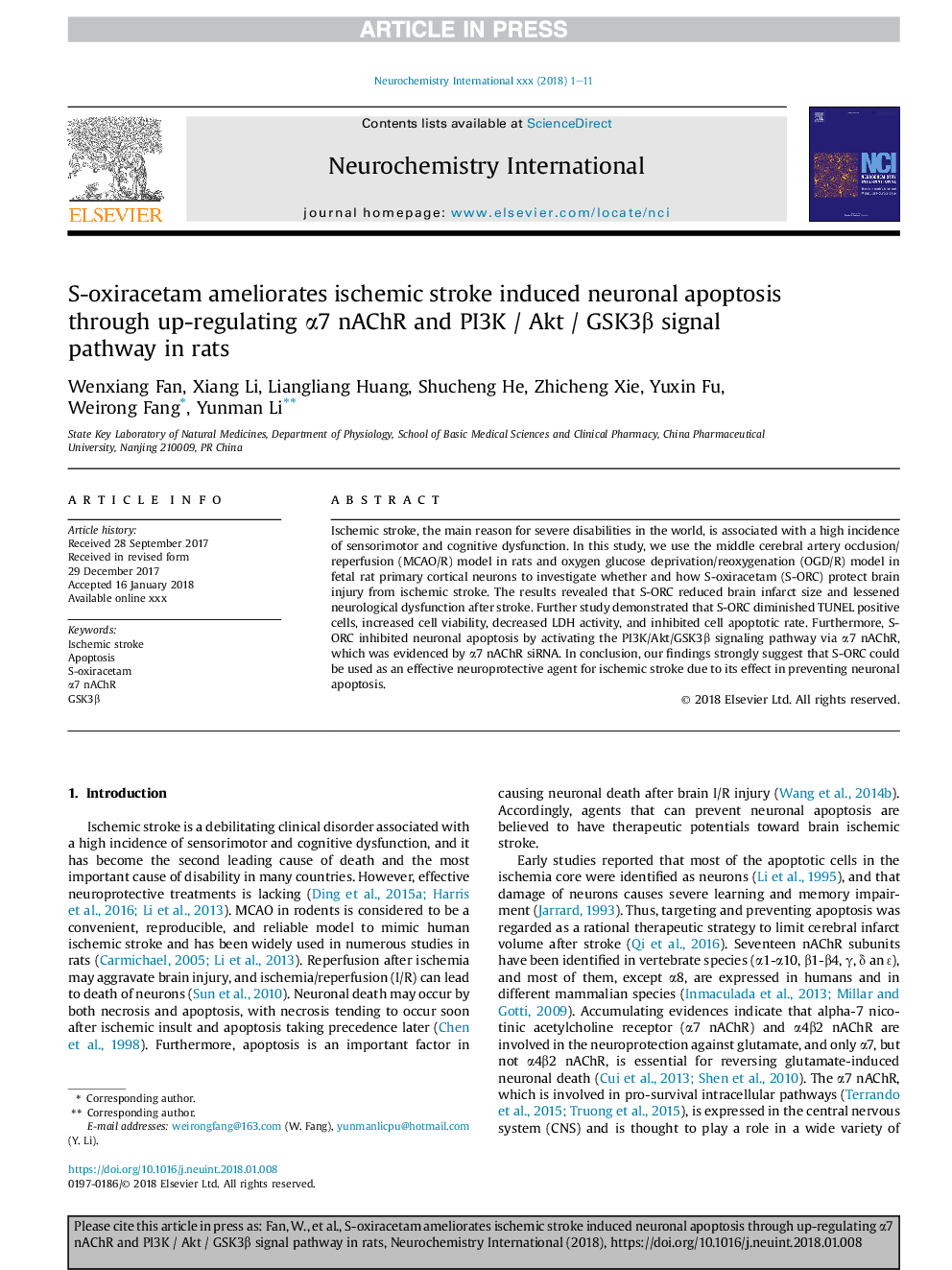| Article ID | Journal | Published Year | Pages | File Type |
|---|---|---|---|---|
| 8478950 | Neurochemistry International | 2018 | 11 Pages |
Abstract
Ischemic stroke, the main reason for severe disabilities in the world, is associated with a high incidence of sensorimotor and cognitive dysfunction. In this study, we use the middle cerebral artery occlusion/reperfusion (MCAO/R) model in rats and oxygen glucose deprivation/reoxygenation (OGD/R) model in fetal rat primary cortical neurons to investigate whether and how S-oxiracetam (S-ORC) protect brain injury from ischemic stroke. The results revealed that S-ORC reduced brain infarct size and lessened neurological dysfunction after stroke. Further study demonstrated that S-ORC diminished TUNEL positive cells, increased cell viability, decreased LDH activity, and inhibited cell apoptotic rate. Furthermore, S-ORC inhibited neuronal apoptosis by activating the PI3K/Akt/GSK3β signaling pathway via α7 nAChR, which was evidenced by α7 nAChR siRNA. In conclusion, our findings strongly suggest that S-ORC could be used as an effective neuroprotective agent for ischemic stroke due to its effect in preventing neuronal apoptosis.
Related Topics
Life Sciences
Biochemistry, Genetics and Molecular Biology
Cell Biology
Authors
Wenxiang Fan, Xiang Li, Liangliang Huang, Shucheng He, Zhicheng Xie, Yuxin Fu, Weirong Fang, Yunman Li,
